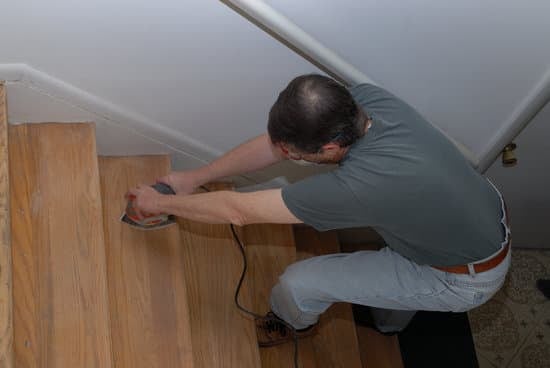Home improvement projects are crucial for enhancing the functionality, aesthetics, and value of your home. Knowing how to tackle home improvement can not only transform your living space but also create a more comfortable and inviting environment for you and your family. Taking on such projects allows homeowners to customize their spaces to suit their needs and preferences while also addressing any existing issues or inefficiencies.
Whether it’s upgrading outdated fixtures, repairing damages, or simply refreshing the look of your home, embarking on home improvement ventures can significantly elevate the quality of your living space. From increasing property value to improving energy efficiency, these projects offer a wide range of benefits that can positively impact both your daily life and long-term investment. By understanding the importance of home improvement, you can make informed decisions about how best to enhance your living environment.
In this guide, we will explore various aspects of home improvement, including assessing needs, setting budgets, research and planning, tools and materials, as well as safety measures. By following these tips and strategies, you can approach your next project with confidence and achieve the desired results effectively and efficiently. Let’s delve into the world of home improvement with a keen eye towards creating spaces that are not only beautiful but also functional and durable.
Assessing Your Needs
Identifying Areas for Improvement
When embarking on a home improvement project, the first step is to assess your home thoroughly to identify areas that need attention. Start by going through each room and make note of any issues like peeling paint, outdated fixtures, or worn-out flooring. Additionally, consider aspects such as energy efficiency, functionality, and overall aesthetics. By taking a comprehensive look at your home, you can prioritize which areas require immediate improvement and create a plan of action.
Prioritizing Projects
Once you have identified the various areas in your home that need improvement, it’s essential to prioritize these projects based on several factors. Consider the urgency of the issue – for example, a leaking roof would be a higher priority than updating light fixtures. Also, take into account your budget and the time required for each project.
It may be more feasible to tackle smaller projects first before moving on to more extensive renovations. By setting priorities, you can efficiently allocate resources and ensure that vital improvements are completed timely.
Seeking Professional Advice
In some cases, it may be challenging to determine which home improvement projects should take precedence or how to address certain issues effectively. This is where seeking professional advice can be beneficial.
A contractor or interior designer can provide valuable insights into the condition of your home and recommend the best solutions tailored to your needs and budget. Consulting with experts can help streamline the decision-making process and ensure that you’re making informed choices when it comes to improving your home.
Setting a Budget
Next, it is essential to research the average costs associated with similar home improvement projects. This will give you a baseline figure to work with and help you avoid underestimating or overestimating expenses. Take into account not only materials and tools but also labor costs if you plan on hiring professionals for certain tasks. Creating a spreadsheet or using budgeting apps can also be helpful in tracking expenses and staying organized throughout the renovation process.
In addition to estimating costs, it is wise to include a contingency fund in your budget. Unforeseen circumstances, like hidden structural issues or unexpected delays, can quickly eat into your budget if you are not prepared. Setting aside an extra 10-20% of your total budget for contingencies can provide peace of mind and ensure that you are financially equipped to handle any surprises that may arise during the course of your home improvement project.
| Aspect | Importance |
|---|---|
| Assessing Project Scope | Crucial for accurate budgeting |
| Researching Average Costs | Helps avoid underestimating expenses |
| Creating Contingency Fund | Provides financial cushion for unforeseen circumstances |
Research and Planning
To start off, look for inspiration from various sources such as home improvement magazines, websites like Pinterest and Houzz, or even visiting model homes in your area. These platforms offer a plethora of ideas that can help shape the vision you have for your own space.
Once you have gathered enough inspiration, it’s time to create a detailed plan. This includes outlining the scope of work, setting a timeline for completion, budget considerations, as well as any potential challenges that may arise during the project.
In addition to finding inspiration and creating a plan, research should also involve understanding building codes and regulations relevant to your area. Depending on the scale of your home improvement project, you may need permits or approvals from local authorities. Failing to comply with these regulations can result in costly fines or having to undo completed work.
Therefore, make sure you familiarize yourself with the legal requirements before starting any renovations or upgrades. By thoroughly researching and planning ahead of time, you’ll be better equipped to tackle your home improvement project successfully.
| Key Point | Details |
|---|---|
| Identifying goals | Create a clear goal for the project |
| Finding Inspiration | Utilize platforms like Pinterest and Houzz for ideas |
| Understanding Regulations | Learn about building codes and necessary permits |
DIY vs Hiring Professionals
When it comes to tackling home improvement projects, one of the key decisions you’ll need to make is whether to do it yourself (DIY) or hire professionals. Both options have their own set of pros and cons, so it’s essential to weigh them carefully before making a choice. Here are some factors to consider:
- Cost: One of the biggest considerations when deciding between DIY and hiring professionals is the cost. DIY projects can be more budget-friendly as you won’t have to pay for labor costs. However, hiring professionals can ensure the job is done correctly the first time, saving you from expensive mistakes in the long run.
- Time and Skill Level: DIY projects can be time-consuming, especially if you’re not experienced in home improvement. Hiring professionals can save you time and stress, as they have the skills and expertise to complete the project efficiently. Consider your own skill level and available time when making this decision.
- Quality and Warranty: Professionals often offer warranties on their work, ensuring that any issues that arise will be fixed at no extra cost. If you opt for DIY, make sure you’re confident in your abilities to complete the project properly without compromising on quality.
Ultimately, the decision between DIY and hiring professionals will depend on your comfort level with home improvement tasks, your budget constraints, and the complexity of the project at hand. Some homeowners may choose to tackle smaller projects themselves while leaving more extensive renovations to professional contractors. Remember to carefully assess your own skills and resources before diving into a home improvement project.
- Consult with experts or friends who have experience in similar projects before making a decision.
- Consider starting small with DIY projects to build confidence before taking on larger tasks.
- If hiring professionals, research thoroughly, read reviews, and ask for references to ensure you’re choosing a reputable contractor.
By considering these factors and weighing the pros and cons of each option, you can make an informed decision on how to tackle home improvement projects effectively. Whether you choose to DIY or hire professionals, proper planning, research, and understanding your own limitations are key elements for successful home renovations.
Tools and Materials
When embarking on a home improvement project, having the right tools and materials is essential for a successful outcome. Whether you are planning to repaint a room, install new flooring, or build a piece of furniture, having the necessary items at your disposal can make the process smoother and more efficient. Here is a comprehensive list of essential tools and materials that are commonly needed for various home improvement tasks.
One of the basic tools that every homeowner should have in their toolkit is a hammer. A good quality hammer will come in handy for tasks ranging from hanging pictures to assembling furniture. Other essential hand tools include screwdrivers, pliers, tape measure, utility knife, and level. These tools are versatile and can be used for a wide range of projects around the house.
For power tools, it is advisable to invest in a drill with different bits for drilling holes and driving screws. A cordless drill offers portability and convenience when working on projects in different areas of your home. A circular saw is another useful tool for cutting wood and other materials accurately.
Additionally, having a sander for smoothing surfaces before painting or staining can save you time and effort. With these basic hand and power tools in your arsenal, you will be well-equipped to tackle various home improvement tasks efficiently.
In addition to tools, having the right materials on hand is crucial for completing home improvement projects successfully. Common materials include paint, brushes or rollers, sandpaper, nails or screws, wood glue, caulk, adhesive tape, flooring materials such as tiles or laminate boards, and hardware items like knobs or handles.
By ensuring that you have all the necessary tools and materials before starting a project, you can minimize disruptions and delays during the process. This preparedness will not only save you time but also contribute to achieving professional-looking results in your home improvement endeavors.
Step-by-Step Guide
Embarking on a home improvement project can be both exciting and daunting. Whether you are considering a small renovation or a major overhaul, having a step-by-step guide to follow can make the process smoother and more manageable. Below are some detailed instructions on how to tackle a specific home improvement project from start to finish:
- Define the Project: Start by clearly defining the scope of your project. Are you looking to update your kitchen, renovate your bathroom, or add a new room to your house? Having a clear vision of what you want to achieve will help guide you through the rest of the process.
- Research and Inspiration: Before diving into the project, take some time to research design ideas and gather inspiration. Look through magazines, websites, and social media platforms for ideas that align with your vision.
- Create a Detailed Plan: Once you have gathered inspiration, it’s time to create a detailed plan for your project. This should include measurements, materials needed, timelines, and any other pertinent details. A well-thought-out plan will help keep you organized throughout the project.
Here Are Some More Steps on How to Tackle Home Improvement Projects
- Gather Materials and Tools: Before starting any work, make sure you have all the necessary materials and tools on hand. This will prevent delays in the project and ensure that you can work efficiently.
- Start with Demolition (if applicable): If your project involves tearing down existing structures or removing old fixtures, start with this step first. Be sure to wear appropriate safety gear and dispose of debris properly.
- Follow Your Plan: As you begin working on your project, refer back to your detailed plan frequently. This will help keep you on track and ensure that you don’t miss any important steps along the way.
By following these steps diligently and staying organized throughout the process, tackling home improvement projects can be a rewarding experience that transforms your living space into the home of your dreams. Remember to practice patience, stay safe, and enjoy the journey towards creating a more beautiful and functional living environment.
Safety Measures
Protective Gear
When embarking on any home improvement project, it is crucial to prioritize safety by wearing the appropriate protective gear. Depending on the task at hand, this could include items such as goggles, gloves, hard hats, masks, and sturdy footwear. Ensuring that you have the right personal protective equipment can significantly reduce the risk of injuries while working on your home.
Proper Ventilation
Many home improvement projects involve working with materials or substances that can emit harmful fumes or particles. To safeguard your health and well-being, make sure to work in a well-ventilated area. Open windows and doors, use exhaust fans, or consider wearing a respirator if working with chemicals or materials that produce strong odors. Proper ventilation is essential to prevent respiratory issues and ensure a safe environment when tackling home improvement tasks.
Working Conditions
In addition to personal protective equipment and proper ventilation, it is essential to pay attention to the overall working conditions when engaging in home improvement projects. Make sure the work area is clean and organized to avoid tripping hazards or accidents.
Keep tools and materials neatly stored when not in use, secure ladders properly, and be mindful of potential risks like electrical outlets or sharp objects. By maintaining a safe and orderly workspace, you can minimize the chances of accidents and work more efficiently on improving your home.
Maintenance and Longevity
Home improvement projects can add not only value but also comfort and beauty to your home. From small updates like a fresh coat of paint to major renovations like a kitchen remodel, these projects can transform your living space and enhance your quality of life. However, the key to making the most out of these improvements lies in how well you maintain them over time.
Once you have completed your home improvement projects, it is essential to establish a maintenance routine to ensure their longevity. Regular upkeep will not only keep your home looking great but also prevent costly repairs down the line. Simple tasks such as cleaning gutters, inspecting for leaks, and servicing HVAC systems can go a long way in preserving the improvements you worked so hard to achieve.
In addition to regular maintenance, consider investing in high-quality materials and craftsmanship during your initial home improvement projects. By choosing durable materials and skilled professionals, you can increase the longevity of your updates and minimize future repairs. Remember that proper care and attention to detail are crucial in maintaining the value and functionality of your home improvements for years to come.
Always take pride in your work and treat your home with the respect it deserves. By following these tips on how to tackle home improvement effectively, you can enjoy a beautiful and well-maintained living space for many years ahead.
Frequently Asked Questions
What Should I Do First for Home Improvement?
The first step for home improvement is to assess your needs and set a budget. Determine what areas of your home need upgrades or repairs, prioritize them, and then create a realistic budget to work within.
How Do I Get Started in Home Improvement?
To get started in home improvement, begin by researching ideas and inspiration for your project. Look at design magazines, websites, and social media platforms for inspiration. Once you have a clear vision, create a detailed plan and timeline for the project.
How Do You Get Picked for Home Improvement Shows?
Being picked for home improvement shows often involves showcasing unique stories, interesting projects, or compelling personalities. To increase your chances of being selected, consider submitting an online application with photos or videos of your project and explaining why you believe your story stands out. Engage with the show’s producers on social media to express your interest as well.

I’m thrilled to have you here as a part of the Remodeling Top community. This is where my journey as an architect and remodeling enthusiast intersects with your passion for transforming houses into dream homes.





